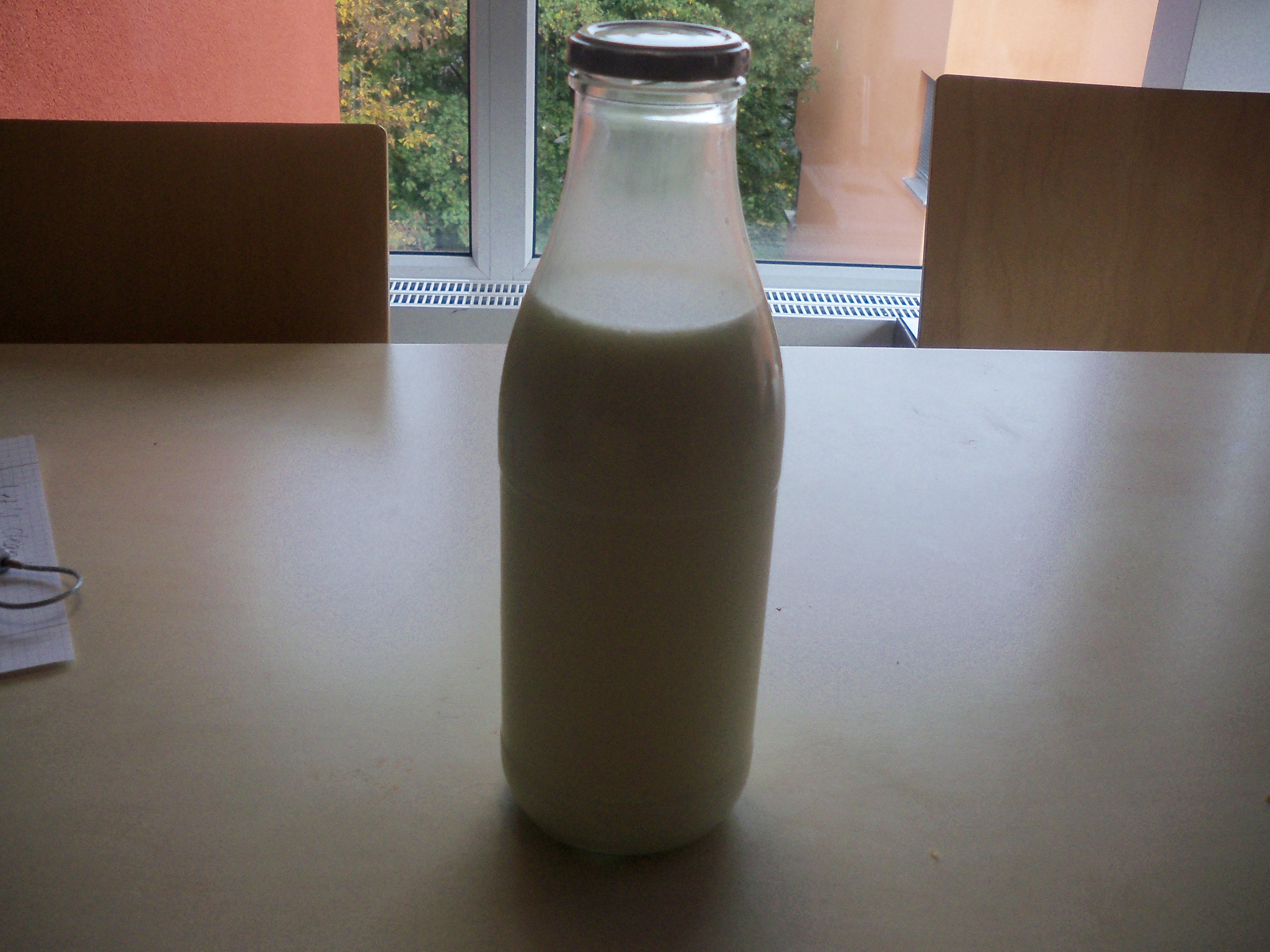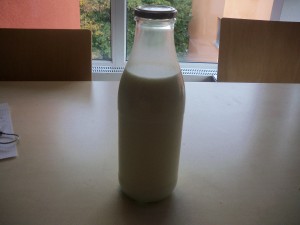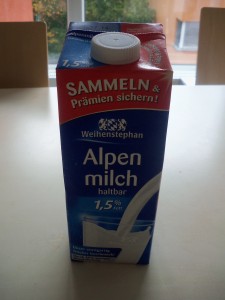So, in the past week, I have discovered something absolutely amazing just down the road. There is an milk dispenser right near where I live that gives fresh milk 24-hours a day. It’s kind of whimsical, especially coming from someone who’s lived in suburban areas most of her life. I was especially excited to find the automat because the milk here in Germany is slightly different than in the United States.
Instead of getting big gallons of milk, like many Americans do, German milk comes in litres. That is no big surprise considering the size of most German refrigerators is comparable to mini-fridges that most college students have in their dorm rooms. However the milk itself is also a bit different. It is called “haltbare Milch” or “storable” milk. This means that until opening, it can be stored for quite some time without refrigeration. The milk tastes perfectly fine on its own, a bit different from fresh milk, but perfectly acceptable. However, since I drink a lot of milk, I prefer to drink it fresh instead of out of the carton and the dairy farm nearby was the perfect solution.
This is the perfect time to talk about the overall differences in German food. German food is what I would describe as fresher. When you walk into a supermarket, there are not always very many ready-made options as in the U.S. The grocery stores themselves are a lot smaller and the frozen food section is also a lot smaller. Germans usually go shopping every 2 or 3 days as opposed to once a week, so the produce used to cook is usually fresher as well. There are also a higher fat content in German milk than in American, with most people buying 1.5%-whole milk instead of fat-free or 2%. This goes along with the idea that the milk is less processed and contains more of its original nutrients. The biggest exception to this, I have found is broth, which comes in a powdered form which much be reconstituted in water. But again, I think this has to do with fridge space which is usually reserved for things that absolutely must be refrigerated. Another exception are eggs which are kept out of fridges both in grocery stores and in homes. These are sold in 10 or 6 packs instead of dozens, which again fits with the motto of going shopping multiple times a week. Bread is of course purchased freshly from the baker, although it can also be bought from supermarket shelves at a lower price but sometimes lower quality.
In attempt to add another level of depth to my discovery of German food, I asked my flatmates a few questions about their own shopping habits. Most of them responded that they actually go shopping a few times a week, but that their families go shopping less often and also have larger fridges. They said that this was mostly due to lack of planning on their part and spontaneous decision making. They also said that students tend to eat less fresh food (something very true in American culture) because it takes longer to prepare. One of my them even said that usually, one doesn’t tend to cook freshly until around the age of 30 or when they have children. When it comes to milk, none of them drink fat-free milk, but solely on the grounds that it tastes better as opposed to it having any large health benefits. As with anything, this was a decidedly unscientific way of describing German culture, but I thought it would be interesting to see what a few people think anyway. When I asked what they thought about the sizes of German fridges, the responses varied from finding the size of the fridge impractical to not needing anymore space. Once my classes start up, I will hopefully have some more serious topics to write about than just milk.
Bis bald!



Leave a Reply